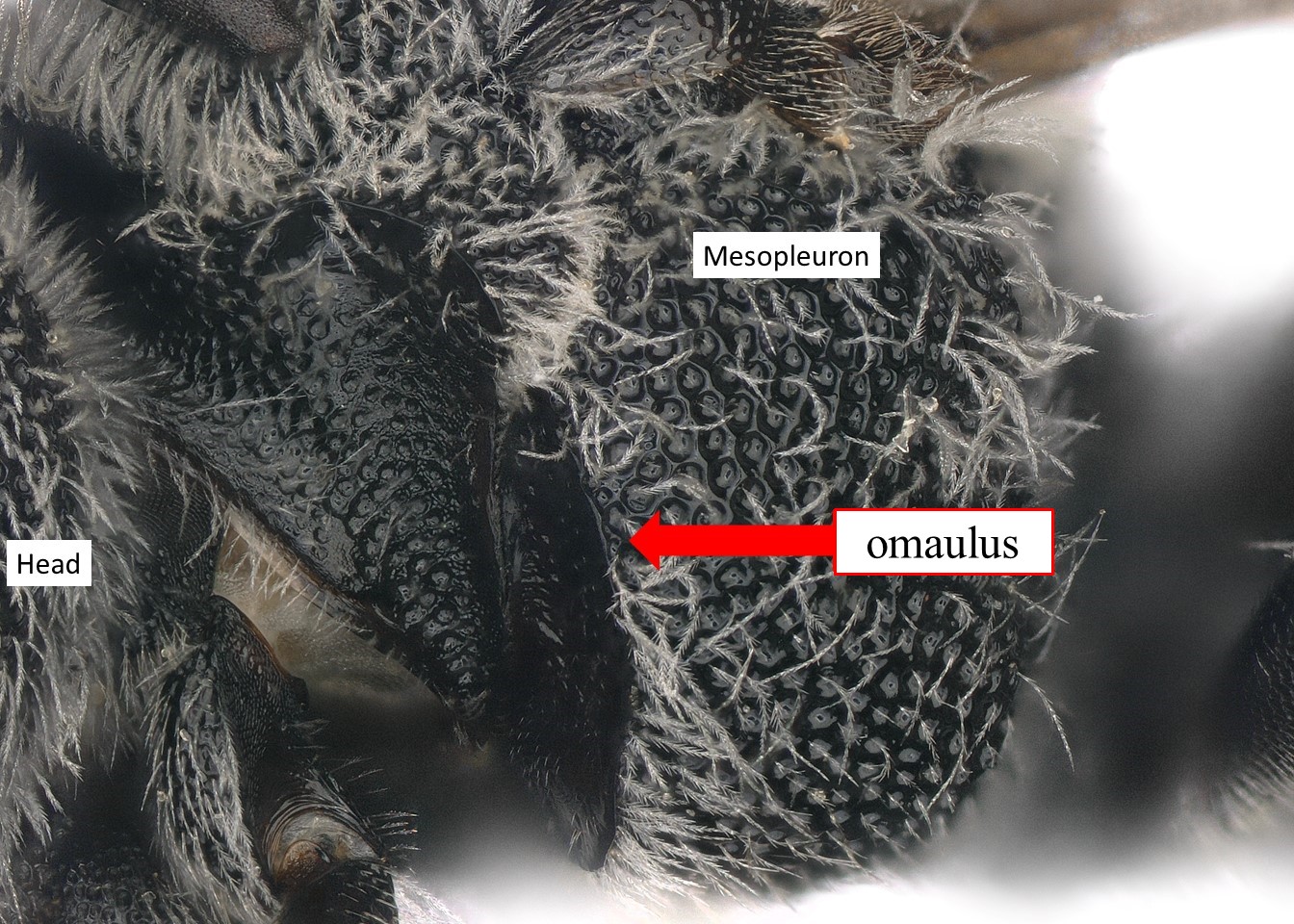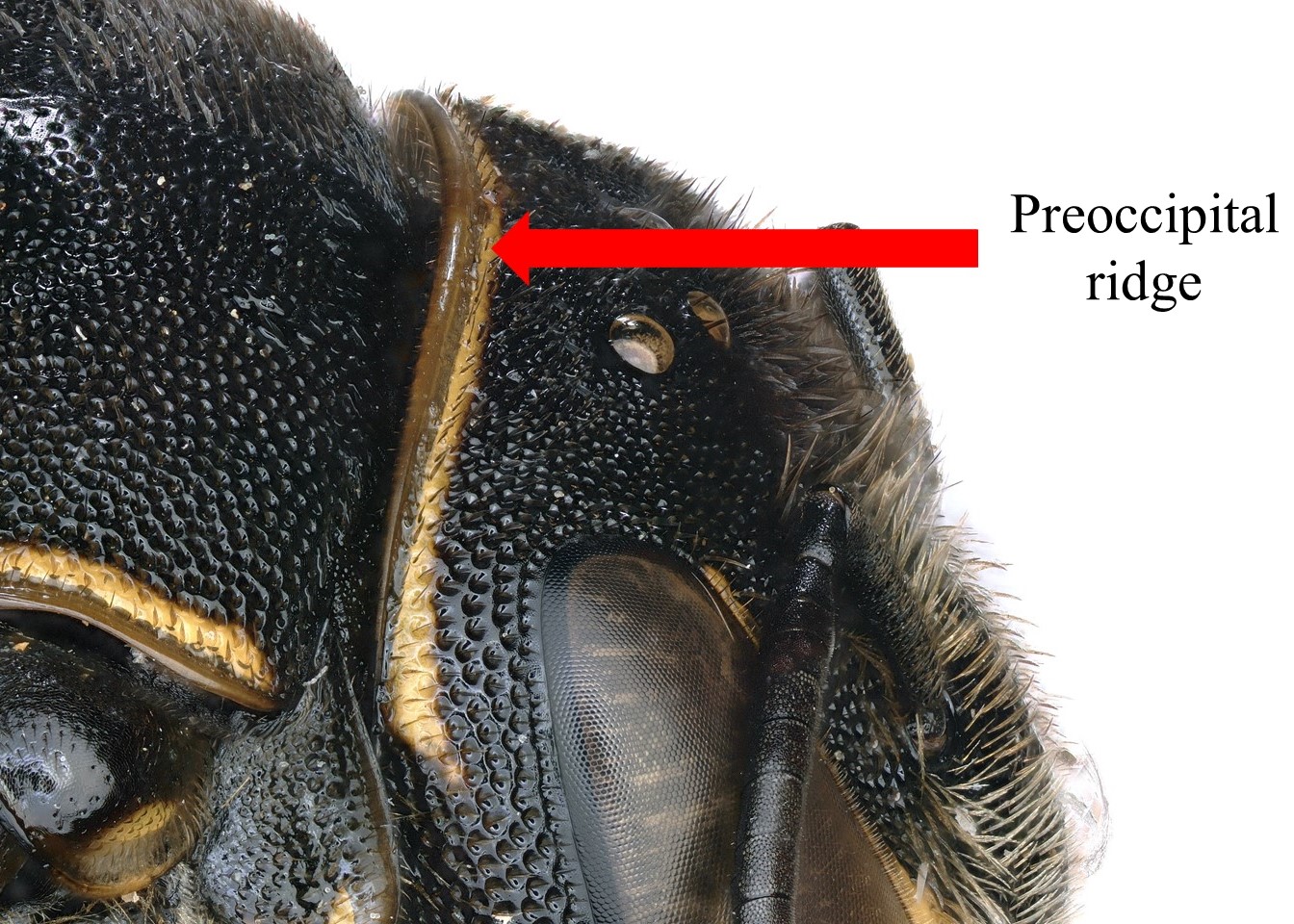Family: Megachilidae
Subfamily: Megachilinae
Tribe: Anthidiini
Genus: Dianthidium Cockerell 1900
Subgenera: Adanthidium, Deranchanthidium, Dianthidium, Mecanthidium
Common name: none
Dianthidium have robust, slightly elongate bodies ranging in body length from 5.5–23 mm. They have black or dark brown integumentintegument:
a tough, protective outer layer
with white to yellow, or red in the subgenus Mecanthidium, maculations on their head, thorax, and abdomen (Michener 2007Michener 2007:
Michener, C.D. 2007. The Bees of the World (2nd ed.). Johns Hopkins University Press, Baltimore and London, 953 pp.). Coloration of the body is largely variable, especially in males, and cannot be used exclusively in identification (Michener 2007Michener 2007:
Michener, C.D. 2007. The Bees of the World (2nd ed.). Johns Hopkins University Press, Baltimore and London, 953 pp.). The abdomen is often curled under the body when active.
Dianthidium contains approximately 28-30 species in 4 subgenera worldwide; 21-23 species in 3 subgenera occur in the U.S. and Canada.
(modified from Michener 2007Michener 2007:
Michener, C.D. 2007. The Bees of the World (2nd ed.). Johns Hopkins University Press, Baltimore and London, 953 pp. unless otherwise stated)
 carinatecarinate:
carinatecarinate: carinatecarinate:
carinatecarinate: simple, without laterallateral:
simple, without laterallateral:Dianthidium may be confused with other Anthidiini, such as Anthidium and Anthidiellum, due to similar rounded, thick bodies patterned with yellow or white. However, the combination of the lamellatelamellate:
thin, plate-like, often somewhat translucent structure
, produced pronotal lobes and carinatecarinate:
having keels or carinae
omaulus help to distinguish Dianthidium (Michener 2007Michener 2007:
Michener, C.D. 2007. The Bees of the World (2nd ed.). Johns Hopkins University Press, Baltimore and London, 953 pp.).
There are no known invasives.
Dianthidium are polylecticpolylectic:
bees that collect pollen from the flowers of a variety of unrelated plants
, but are often seen on Asteraceae (Wilson and Carril 2016Wilson and Carril 2016:
Wilson, J.S. and O.M. Carril. 2016. The Bees in Your Backyard: A Guide to North Americarsquo;s Bees. Princeton University Press, Princeton and Oxford, 288 pp.).
Dianthidium are solitary but are known to nest in aggregations. Nests are built in exposed riverbanks, holes in the soil, sand dunes, or among plant roots (Wilson and Carril 2016Wilson and Carril 2016:
Wilson, J.S. and O.M. Carril. 2016. The Bees in Your Backyard: A Guide to North Americarsquo;s Bees. Princeton University Press, Princeton and Oxford, 288 pp.). Nests are also built above ground in preexisting natural cavities in wood, hollow stems, or rock crevices, as well as in exposed areas on rocks or twigs (Wilson and Carril 2016Wilson and Carril 2016:
Wilson, J.S. and O.M. Carril. 2016. The Bees in Your Backyard: A Guide to North Americarsquo;s Bees. Princeton University Press, Princeton and Oxford, 288 pp.). Nests are composed of pebbles, sand, and occasionally pieces of plants with resins. Nests consist of one or more cells in a single chamber or as separated clusters of cells and sometimes with a parchment-like membranous lining (Grigarick and Stange 1968Grigarick and Stange 1968:
Grigarick, A.A. and L.A. Stange. 1968. Pollen collecting bees of the Anthidiini of California (Hymenoptera: Megachilidae). Bulletin of the California Insect Survey 9: 1ndash;113.).
Dianthidium occurs in the Western Hemisphere, ranging from southern Canada through southern Mexico (Michener 2007Michener 2007:
Michener, C.D. 2007. The Bees of the World (2nd ed.). Johns Hopkins University Press, Baltimore and London, 953 pp.). In the U.S. and Canada, they are most diverse in the west and are rare in the east, except for D. simile, which occurs in the eastern U.S., D. curvatum, which occurs transcontinentally, and D. floridiense, which is endemic to Florida (Wilson and Carril 2016Wilson and Carril 2016:
Wilson, J.S. and O.M. Carril. 2016. The Bees in Your Backyard: A Guide to North Americarsquo;s Bees. Princeton University Press, Princeton and Oxford, 288 pp.). Dianthidium is uncommon in most of Canada with the exception of D. simile in southern Ontario, D. ulkei in central to western Canada, and D. subparvum in western Canada (Wilson and Carril 2016Wilson and Carril 2016:
Wilson, J.S. and O.M. Carril. 2016. The Bees in Your Backyard: A Guide to North Americarsquo;s Bees. Princeton University Press, Princeton and Oxford, 288 pp.).
Distribution map generated by Discover Life -- click on map for details, credits, and terms of use.